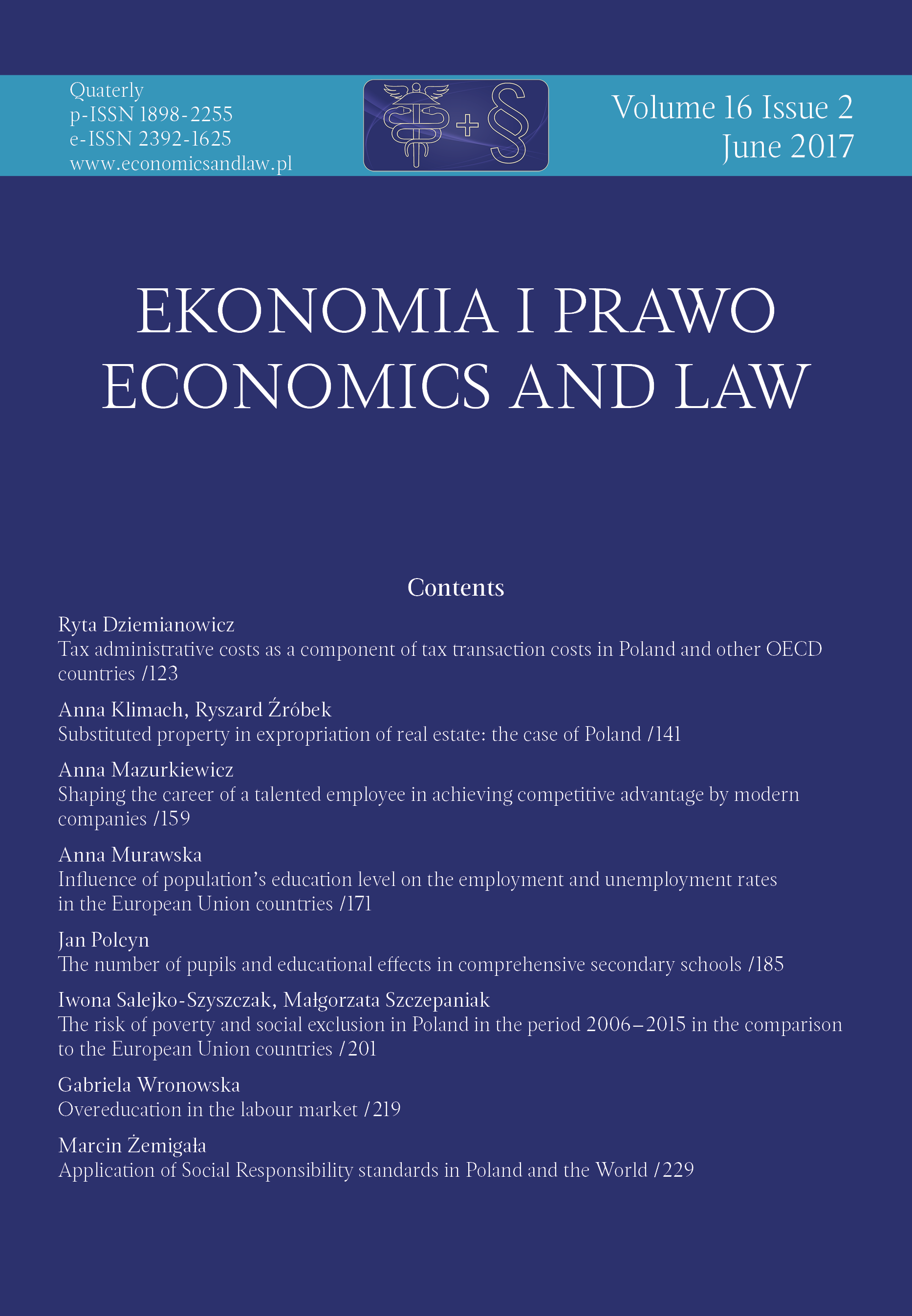The number of pupils and educational effects in comprehensive secondary schools
The number of pupils and educational effects in comprehensive secondary schools
Author(s): Jan PolcynSubject(s): Economy, National Economy
Published by: Wydawnictwo Naukowe Uniwersytetu Mikołaja Kopernika
Keywords: number of pupils in a school; educational value added (EVA); comprehensive secondary school; socio-cultural capital
Summary/Abstract: Motivation: There may be a significant correlation between the number of pupils in a school and their learning performance. Some studies point to the negative impact of schools with a large number of pupils on the educational results achieved. At the same time, the demo-graphic crisis that has been deepening steadily for several years now represents an im-portant motivation for rationalising the existing network of schools. Aim: The aim of the study was to determine the optimum size of schools based on the criterion of examination results expressed through educational value added. Results: The analyses conducted in this study showed that the comprehensive secondary schools with over 600 pupils had the high-est learning outcomes as expressed through educational value added. The lowest educational effectiveness was found in schools with less than 150 pupils. A dependency was discovered whereby the effectiveness of education increases as the number of pupils grows. Due to the lack of data concerning examination results in schools with more than 1,000 pupils (value indicated in American studies as the threshold value for positive learning outcomes), it was not possible to determine the maximum number of pupils that guarantees satisfactory learning outcomes.
Journal: Ekonomia i Prawo. Economics and Law
- Issue Year: 16/2017
- Issue No: 2
- Page Range: 185-200
- Page Count: 16
- Language: English

